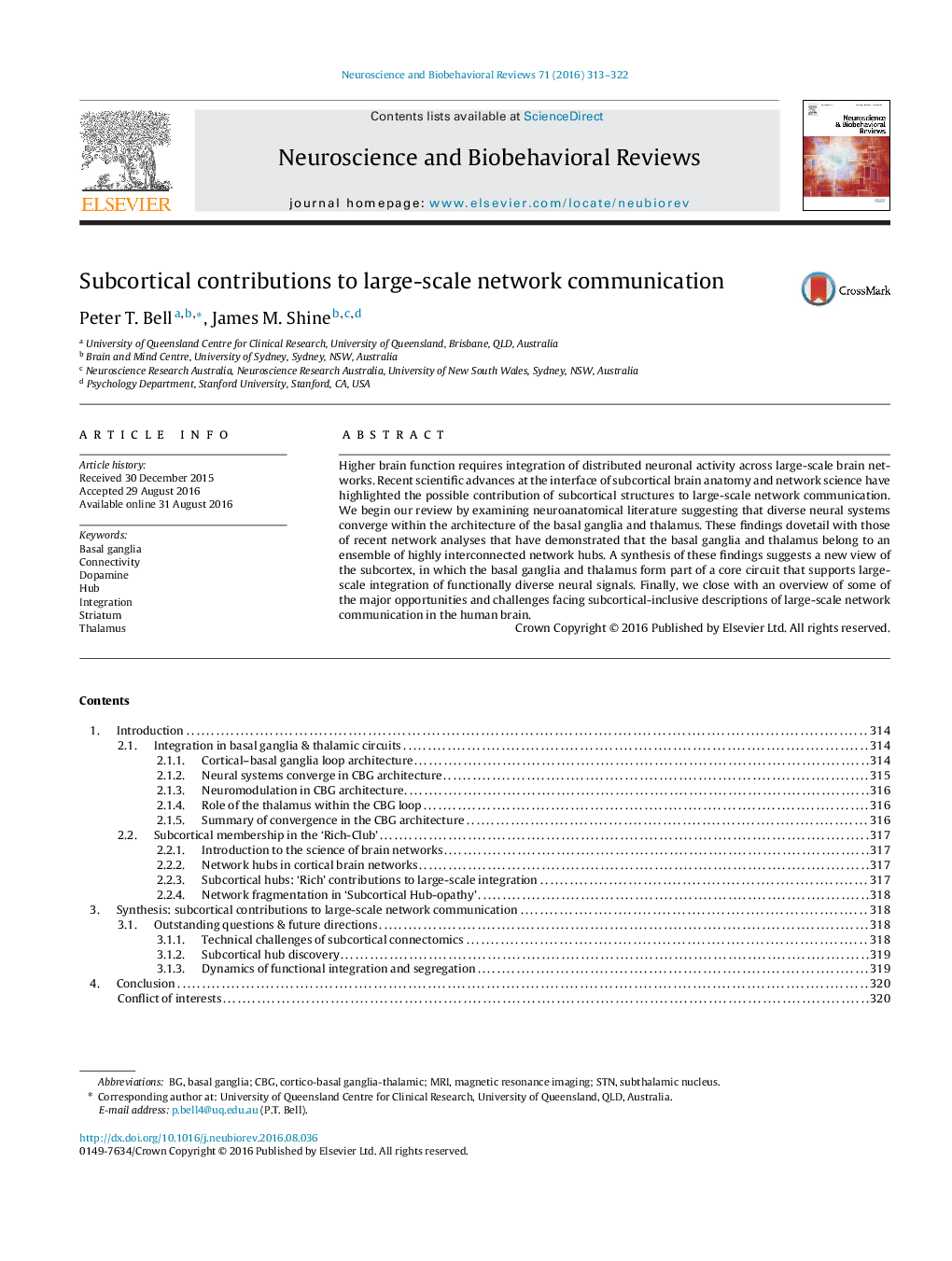| Article ID | Journal | Published Year | Pages | File Type |
|---|---|---|---|---|
| 5043749 | Neuroscience & Biobehavioral Reviews | 2016 | 10 Pages |
â¢Neural systems converge within the architecture of the basal ganglia and thalamus.â¢Emerging data suggests that basal ganglia and thalamus act as network hubs.â¢Basal ganglia and thalamus form a core circuit supporting large-scale integration.â¢Opportunities and challenges of subcortical-inclusive connectomic mapping.
Higher brain function requires integration of distributed neuronal activity across large-scale brain networks. Recent scientific advances at the interface of subcortical brain anatomy and network science have highlighted the possible contribution of subcortical structures to large-scale network communication. We begin our review by examining neuroanatomical literature suggesting that diverse neural systems converge within the architecture of the basal ganglia and thalamus. These findings dovetail with those of recent network analyses that have demonstrated that the basal ganglia and thalamus belong to an ensemble of highly interconnected network hubs. A synthesis of these findings suggests a new view of the subcortex, in which the basal ganglia and thalamus form part of a core circuit that supports large-scale integration of functionally diverse neural signals. Finally, we close with an overview of some of the major opportunities and challenges facing subcortical-inclusive descriptions of large-scale network communication in the human brain.
